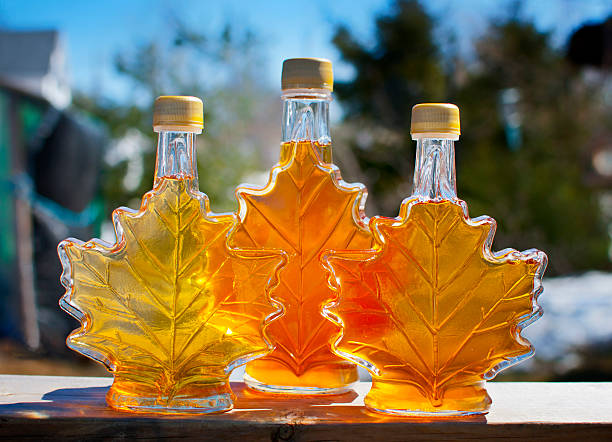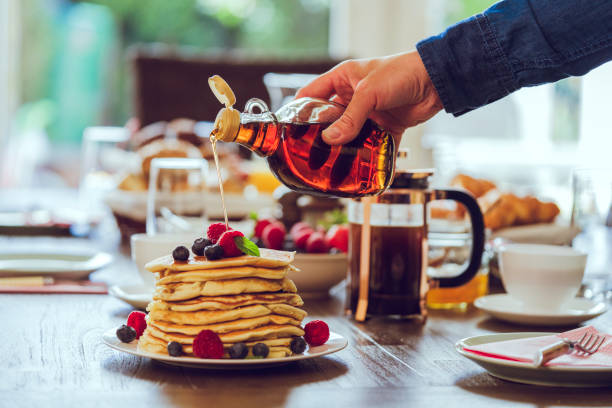When it comes to the golden, velvety smooth elixir that graces our breakfast tables and sweetens our favorite treats, maple syrup holds a special place in our hearts and kitchens. This delightful sweetener, born from the sap of maple trees and carrying with it centuries of tradition, is more than just a topping—it’s a culinary treasure. But as with all treasures, the question of preservation arises: Does maple syrup go bad? This seemingly simple inquiry opens the door to a deeper understanding of food storage, quality, and safety.
Our exploration into the longevity of maple syrup is not just about answering a question; it’s about elevating your culinary experience and ensuring that every drop of this liquid gold is savored to its fullest potential. We dive into the heart of the maple woods, tapping into expert knowledge and uncovering the science behind the shelf life of maple syrup. By understanding how to properly store and care for your maple syrup, you can ensure that its unique flavor and quality remain intact, enriching your dishes and desserts for years to come.
As we journey through the intricacies of maple syrup’s durability, we invite you to join us in unraveling the mysteries that lie within each bottle. Whether you’re a culinary enthusiast eager to preserve the integrity of your ingredients or a casual consumer curious about the lifespan of your pantry staples, this article promises to enlighten and inspire. Discover the signs of spoilage, learn the best storage practices, and unlock the secrets to extending the life of your maple syrup. Let’s embark on this sweet adventure together, ensuring that every drizzle and dollop enhances your dining experience with confidence and joy.
What Is Maple Syrup?

Maple syrup is a sweet, thick liquid that is made from the sap of maple trees. It has a distinct taste and is often used as a topping for pancakes, waffles, and other breakfast foods. The majority of maple syrup production takes place in Canada and the United States, with Canada producing over 80% of the world’s supply.
Shelf Life of Maple Syrup
The shelf life of maple syrup depends primarily on two factors: whether the container is opened or unopened, and the grade/color of the syrup.
Opened vs. Unopened Maple Syrup
An unopened, properly stored bottle of maple syrup will keep significantly longer than one that’s been opened. Here’s a look at approximate shelf life for pure maple syrup:
- Unopened: Up to 1 year from the production date when stored in a cool, dark place. Maple syrup packaged in glass containers may last slightly longer than plastic.
- Opened: An opened bottle of maple syrup will keep for about 1 year in the refrigerator. For even longer storage, keep maple syrup in the freezer where it can last indefinitely when frozen.
The same general shelf life guidelines apply to both pure maple syrup and imitation maple-flavored syrups like Mrs. Butterworth’s or Log Cabin. However, it’s important to always check the product label on imitation syrups for any specific expiration or use-by dates provided by the manufacturer.
Maple Syrup Grades & Shelf Life
Maple syrup is classified into different grades based on color and flavor. Lighter colored grades have a milder flavor, while darker syrups are bolder. Grade B or Grade A Dark Color maple syrups tend to have a slightly longer shelf life compared to lighter grades. The more robust flavors hold up better over time.
Proper Storage of Maple Syrup
To get the most out of its shelf life, maple syrup must be stored properly:
Unopened Maple Syrup Storage
- Store unopened maple syrup in a cool, dark place like a pantry or cupboard. Temperatures between 60-75°F are ideal.
- Avoid storing maple syrup in areas that may get hot like near appliances or in direct sunlight. Excessive heat can cause faster degradation.
- Use a tightly sealed glass or metal container if possible. Glass and metal reduce air exposure better than plastic packaging.
- For very long term storage (1 year+), some people prefer to keep unopened maple syrup in a root cellar or other location with cool, stable temperatures around 50°F.
Opened Maple Syrup Storage
- Once opened, maple syrup will last longest in the refrigerator. Keep it in a clean, airtight glass or plastic container.
- For indefinite storage, pure maple syrup can be placed in the freezer. Leave at least 1/2 inch of headspace in the container to allow for expansion.
- Do not store maple syrup on the refrigerator door, where the temperature fluctuates. Place it toward the back of the fridge.
Signs Your Maple Syrup Has Gone Bad
Check maple syrup occasionally for any of the following signs that indicate it may be spoiled and should be discarded:
- Mold: Mold will appear fuzzy or discolored on the surface. This is a definite sign to throw maple syrup away.
- Changes in texture: Maple syrup becomes thicker and grainy or has solid sugar crystals.
- Darkening color: The syrup darkens significantly beyond its original grade color.
- Off odors: Maple syrup starts to smell sour, rancid, or unpleasant. It should always smell sweet.
- Leaks or damage: Leaking or damaged packaging can allow microbes and moisture to contaminate the syrup. When in doubt, throw it out.
Reheating Maple Syrup After Opening

Some sources advise reheating maple syrup after opening before storage to prolong its shelf life. However, this is no longer recommended, as heating maple syrup to high temperatures can actually accelerate the chemical changes that lead to spoilage.
Instead, refrigerate opened maple syrup immediately in an airtight container without reheating. If mold, crystals, or other signs of spoilage develop later on, then it can be safely reheated once to 165°F (74°C) just before use. But avoid unnecessary heating cycles.
Alternative Long-Term Storage Options
For pure maple syrup you want to keep for more than a year, consider these alternative long-term storage solutions:
- Freezing: As mentioned above, pure maple syrup freezes well. It will never truly go bad when frozen.
- Canning: Home canning maple syrup in mason jars creates an anaerobic environment that prevents microbial growth. Follow proper canning instructions.
- Root cellars: Stable underground temperatures around 50°F make root cellars ideal for unopened maple syrup storage. Bury in sand or sawdust.
- Vacuum sealing: Vacuum sealing unopened bottles of maple syrup removes oxygen and extends shelf life at room temperature.
Making Maple Syrup Last Longer When Open
Once opened, maple syrup has a shorter shelf life but there are some tips to make it last as long as possible:
- Use clean utensils to reduce microbial contamination each time you use the syrup. Never put dirty utensils back into the container.
- Keep the syrup bottle in the fridge immediately after use instead of leaving it out.
- Always screw the lid on tightly to prevent airflow into the bottle.
- If mold forms on the syrup’s surface, heat the remainder to 165°F (74°C) before use to kill mold spores.
- If syrup crystallizes, microwave in short bursts to gently reheat until smooth and liquid again.
- Consider transferring to smaller containers to limit oxygen exposure as you use up the syrup.
- For long-term freezer storage, leave ample headspace and use rigid plastic containers instead of glass to prevent cracking.
Conclusion
With proper storage techniques, an unopened bottle of pure maple syrup can easily last 1 year on the shelf, 2 years in the fridge, and indefinitely in the freezer. Once opened, aim to use up maple syrup within 6-12 months. Keep it refrigerated and check frequently for any signs of spoilage like mold, an off smell or taste, separation, or graininess. By following these maple syrup storage guidelines, you can feel confident your maple syrup will stay fresh. So drizzle it on your pancakes and waffles without worry. With its rich aroma and flavor, pure maple syrup is well worth having on hand for sweetening all kinds of delicious treats and breakfasts.
